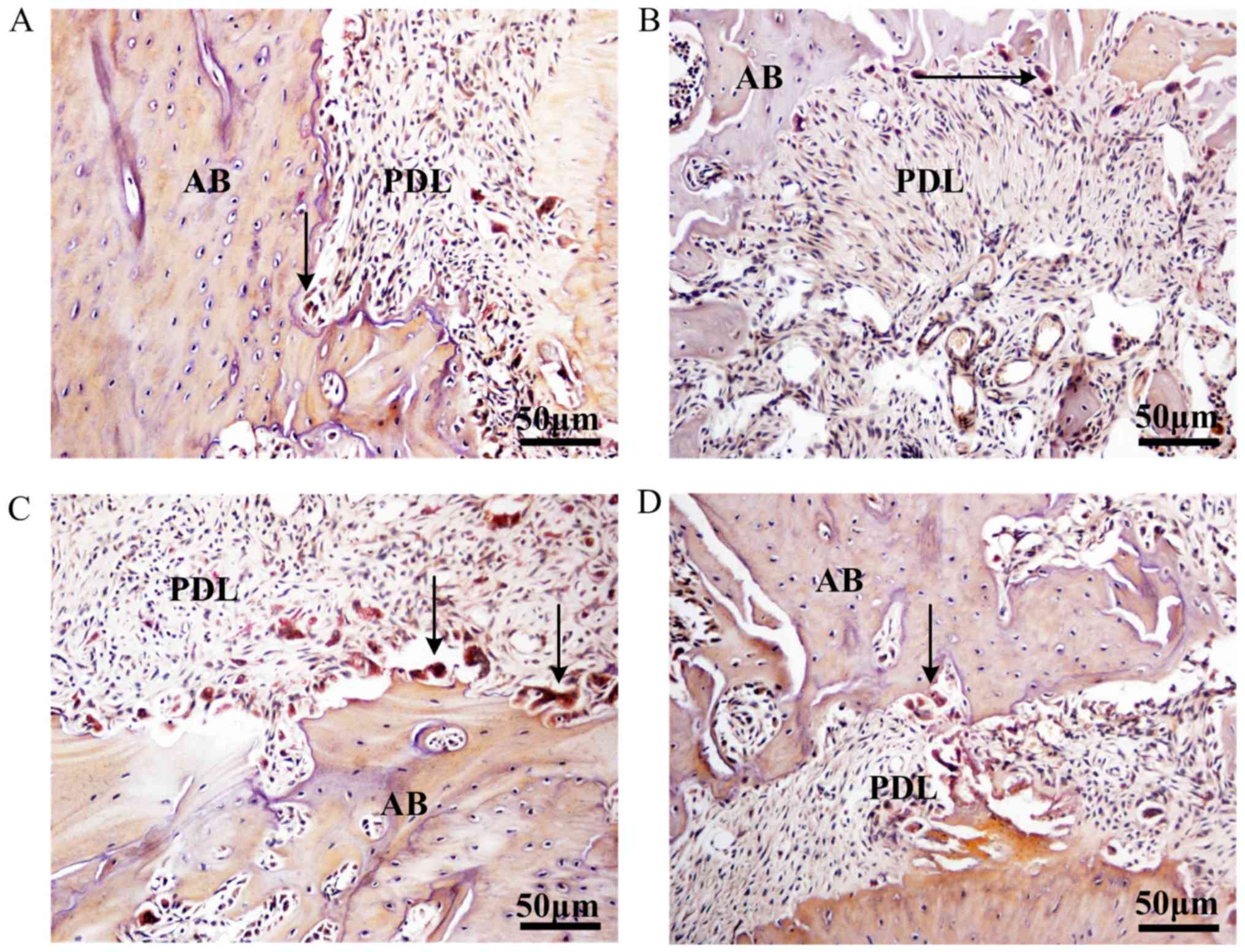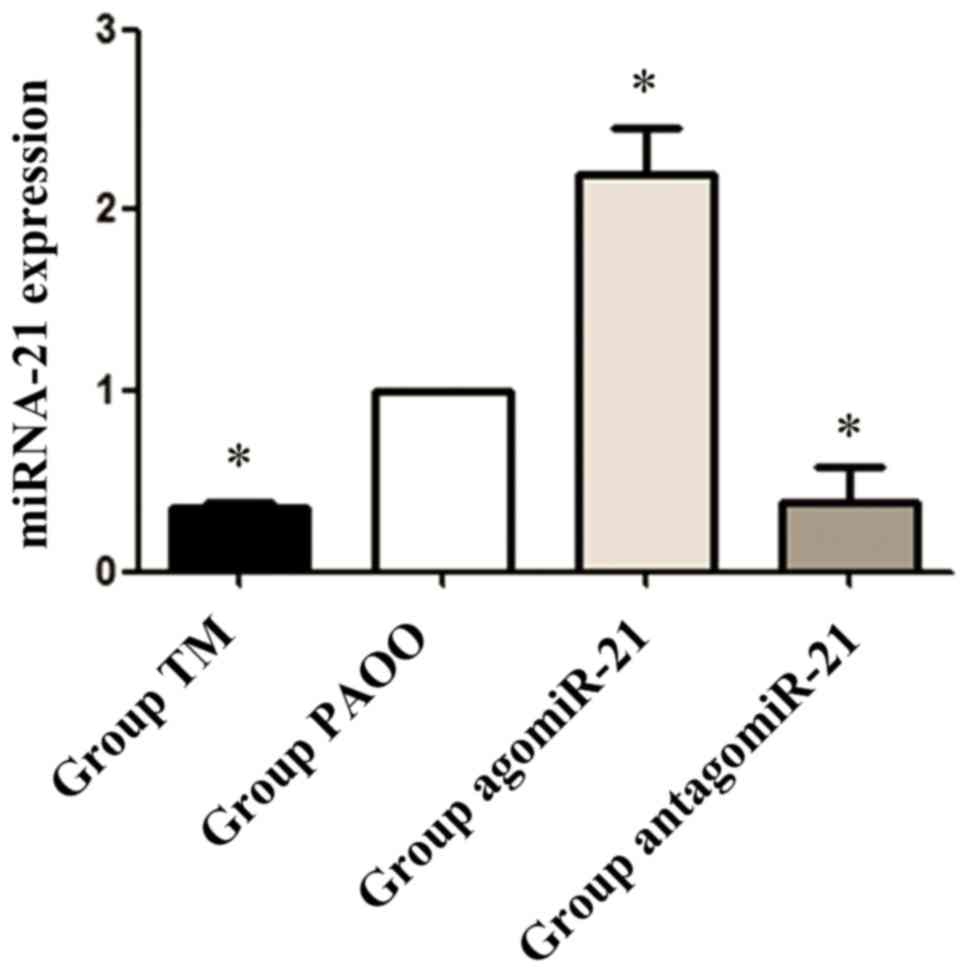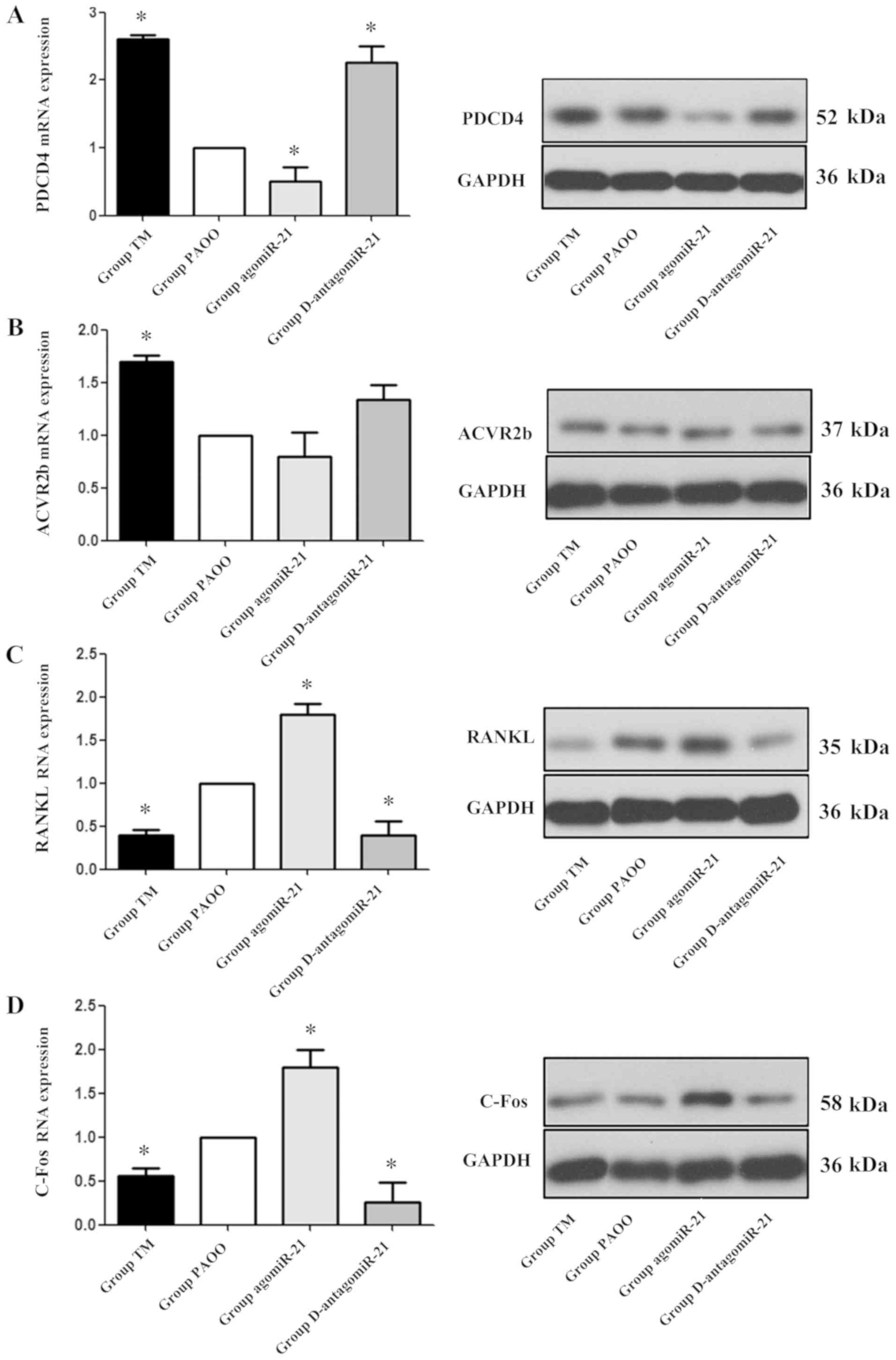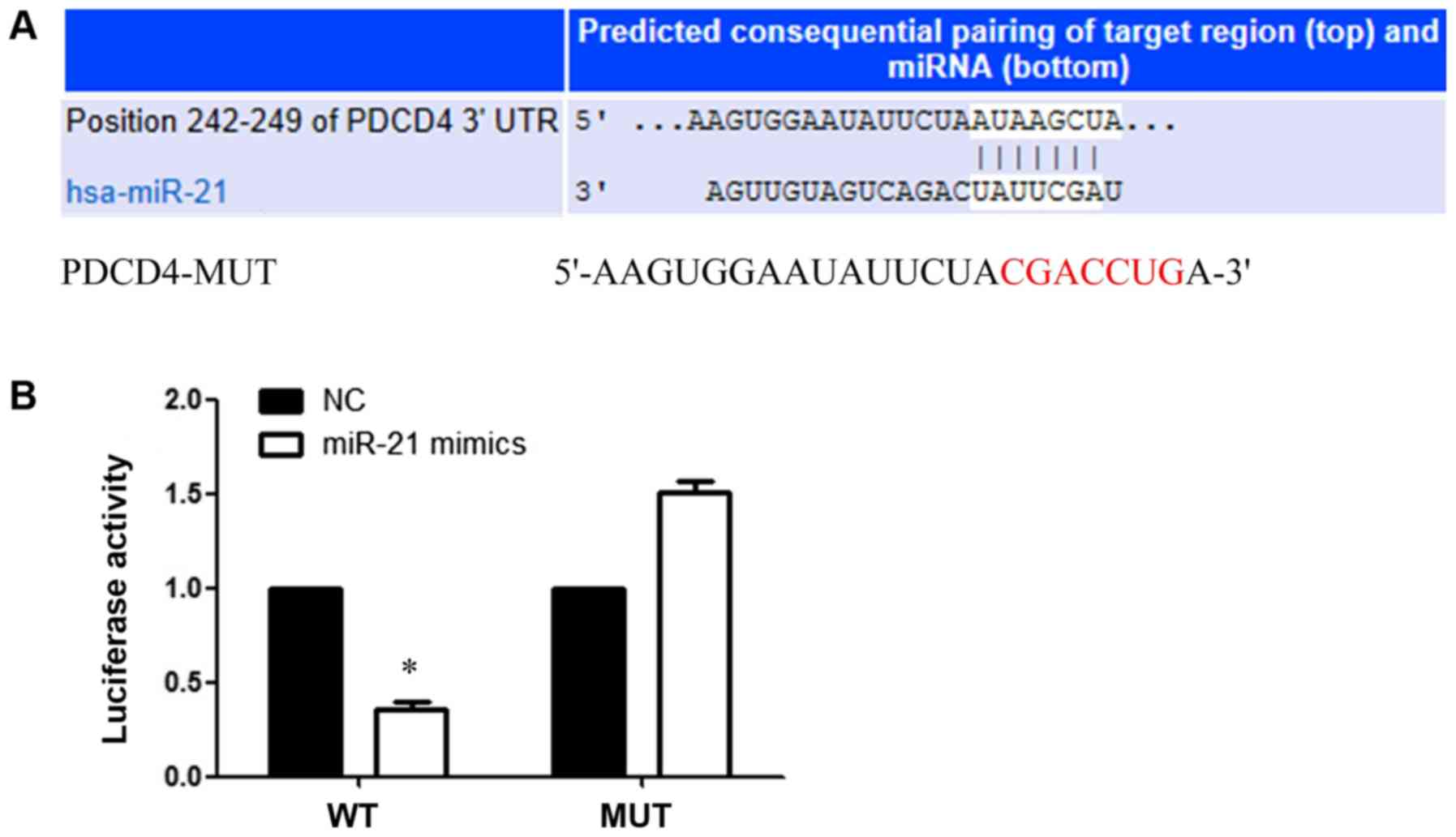|
1
|
Van Schepdael A, Vander Sloten J and Geris
L: A mechanobiological model of orthodontic tooth movement. Biomech
Model Mechanobiol. 12:249–265. 2013. View Article : Google Scholar : PubMed/NCBI
|
|
2
|
Soltani L, Loomer PM and Chaar EE: A novel
approach in periodontally accelerated osteogenic orthodontics
(PAOO): A case report. Clin Adv Periodontics. 9:110–114. 2019.
View Article : Google Scholar : PubMed/NCBI
|
|
3
|
Wilcko WM and Wilcko MT: Accelerating
tooth movement: The case for corticotomy-induced orthodontics. Am J
Orthod Dentofacial Orthop. 114:4–12. 2013. View Article : Google Scholar
|
|
4
|
Adusumilli S, Yalamanchi L and
Yalamanchili PS: Periodontally accelerated osteogenic orthodontics:
An interdisciplinary approach for faster orthodontic therapy. J
Pharm Bioallied Sci. 6 (Suppl 1):S2–S5. 2014. View Article : Google Scholar : PubMed/NCBI
|
|
5
|
Ferguson DJ, Al-Harbi MS, Wilcko WM,
Wilcko MT and Erie P: Lower dental arch decrowding comparing
non-extraction accelerated osteogenesis and distraction techniques.
J Dent Res. 80:181–183. 2001.
|
|
6
|
Yu H, Jiao F, Wang B and Shen SG:
Piezoelectric decortication applied in periodontally accelerated
osteogenic orthodontics. J Craniofac Surg. 24:1750–1752. 2013.
View Article : Google Scholar : PubMed/NCBI
|
|
7
|
He L and Hannon GJ: MicroRNAs: Small RNAs
with a big role in gene regulation. Nat Rev Genet. 5:522–531. 2004.
View Article : Google Scholar : PubMed/NCBI
|
|
8
|
Bartel D: MicroRNAs: Target recognition
and regulatory functions. Cell. 136:215–233. 2009. View Article : Google Scholar : PubMed/NCBI
|
|
9
|
Lian JB, Stein GS, van Wijnen AJ, Stein
JL, Hassan MQ, Gaur T and Zhang Y: MicroRNA control of bone
formation and homeostasis. Nat Rev Endocrinol. 8:212–227. 2012.
View Article : Google Scholar : PubMed/NCBI
|
|
10
|
Wei F, Liu D, Feng C, Zhang F, Yang S, Hu
Y, Ding G and Wang S: microRNA-21 mediates stretch-induced
osteogenic differentiation in human periodontal ligament stem
cells. Stem Cells Dev. 24:312–319. 2015. View Article : Google Scholar : PubMed/NCBI
|
|
11
|
Wu Y, Ou Y, Liao C, Liang S and Wang Y:
High-throughput sequencing analysis of the expression profile of
microRNAs and target genes in mechanical force-induced
osteoblastic/cementoblastic differentiation of human periodontal
ligament cells. Am J Transl Res. 11:3398–3411. 2019.PubMed/NCBI
|
|
12
|
Yao S, Zhao W, Ou Q, Liang L, Lin X and
Wang Y: MicroRNA-214 suppresses osteogenic differentiation of human
periodontal ligament stem cells by targeting ATF4. Stem Cells Int.
2017:30286472017. View Article : Google Scholar : PubMed/NCBI
|
|
13
|
Ramanujam D, Sassi Y, Laggerbauer B and
Engelhardt S: Viral vector-based targeting of miR-21 in cardiac
nonmyocyte cells reduces pathologic remodeling of the heart. Mol
Ther. 24:1939–1948. 2016. View Article : Google Scholar : PubMed/NCBI
|
|
14
|
NIH ARAC guidelines for euthanasia of
rodents using carbon dioxide. NIH Office of Intramural Research and
Office of Animal Care and Use, . 2017.https://oacu.oir.nih.gov/oacu-staff
|
|
15
|
Feng J, Wang K, Liu X, Chen S and Chen J:
The quantification of tomato microRNAs response to viral infection
by stem-loop real-time RT-PCR. Gene. 437:14–21. 2009. View Article : Google Scholar : PubMed/NCBI
|
|
16
|
Livak KJ and Schmittgen TD: Analysis of
relative gene expression data using real-time quantitative PCR and
the 2(-Delta Delta C(T)) method. Methods. 25:402–408. 2001.
View Article : Google Scholar : PubMed/NCBI
|
|
17
|
Takegahara N, Kim H, Mizuno H,
Sakaue-Sawano A, Miyawaki A, Tomura M, Kanagawa O, Ishii M and Choi
Y: Involvement of receptor activator of nuclear factor-κB ligand
(RANKL)-induced incomplete cytokinesis in the polyploidization of
osteoclasts. J Biol Chem. 291:3439–3454. 2016. View Article : Google Scholar : PubMed/NCBI
|
|
18
|
Izawa T, Arakaki R, Mori H, Tsunematsu T,
Kudo Y, Tanaka E and Ishimaru N: The nuclear receptor AhR controls
bone homeostasis by regulating osteoclast differentiation via the
RANK/c-Fos signaling axis. J Immunol. 197:4639–4650. 2016.
View Article : Google Scholar : PubMed/NCBI
|
|
19
|
Amit G, Jps K, Pankaj B, Suchinder S and
Parul B: Periodontally accelerated osteogenic orthodontics (PAOO)-a
review. J Clin Exp Dent. 4:e292–e296. 2012. View Article : Google Scholar : PubMed/NCBI
|
|
20
|
Ma Z, Zheng J, Yang C, Xie Q, Liu X and
Abdelrehem A: A new modified bone grafting technique for
periodontally accelerated osteogenic orthodontics. Medicine
(Baltimore). 97:e120472018. View Article : Google Scholar : PubMed/NCBI
|
|
21
|
Hou HY, Li CH, Chen MC, Lin PY, Liu WC,
Cathy Tsai YW and Huang RY: A novel 3D-printed computer-assisted
piezocision guide for surgically facilitated orthodontics. Am J
Orthod Dentofacial Orthop. 155:584–591. 2019. View Article : Google Scholar : PubMed/NCBI
|
|
22
|
Friedman RC, Farh KK, Burge CB and Bartel
DP: Most mRNAs are conserved targets of microRNAs. Genome Res.
19:92–105. 2019. View Article : Google Scholar
|
|
23
|
Pitari MR, Rossi M, Amodio N, Botta C,
Morelli E, Federico C, Gullà A, Caracciolo D, Di Martino MT,
Arbitrio M, et al: Inhibition of miR-21 restores RANKL/OPG ratio in
multiple myeloma-derived bonemarrow stromal cells and impairs the
resorbing activity of mature osteoclasts. Oncotarget.
6:27343–27358. 2015. View Article : Google Scholar : PubMed/NCBI
|
|
24
|
Frankel B, Christoffersen NR, Jacobsen A,
Lindow M, Krogh A and Lund AH: Programmed cell death 4 (PDCD4) is
an important functional target of the microRNA miR-21 in breast
cancer cells. J Biol Chem. 283:1026–1033. 2008. View Article : Google Scholar : PubMed/NCBI
|
|
25
|
Yasuda M, Nishizawa T, Ohigashi H, Tanaka
T, Hou DX, Colburn NH and Murakami A: Linoleic acid metabolite
suppresses skin inflammation and tumor promotion in mice: Possible
roles of programmed cell death 4 induction. Carcinogenesis.
30:1209–1216. 2009. View Article : Google Scholar : PubMed/NCBI
|
|
26
|
Loh PG, Yang HS, Walsh MA, Wang Q, Wang X,
Cheng Z, Liu D and Song H: Structural basis for translational
inhibition by the tumour suppressor Pdcd4. EMBO J. 28:274–285.
2009. View Article : Google Scholar : PubMed/NCBI
|
|
27
|
Fujita S, Ito T, Mizutani T, Minoguchi S,
Yamamichi N, Sakurai K and Iba H: miR-21 Gene expression triggered
by AP-1 is sustained through a double-negative feedback mechanism.
J Mol Biol. 378:492–504. 2008. View Article : Google Scholar : PubMed/NCBI
|
|
28
|
Miao W, Gao H and Hou X: Magnesium
lithospermate B inhibits titanium particles-induced osteoclast
formation by c-fos and inhibiting NFATc1 expression. Connect Tissue
Res. 60:487–494. 2019. View Article : Google Scholar : PubMed/NCBI
|
|
29
|
Talotta F, Cimmino A, Matarazzo MR,
Casalino L, De Vita G, D'Esposito M, Di Lauro R and Verde P: An
autoregulatory loop mediated by miR-21 and PDCD4 controls the AP-1
activity in RAS transformation. Oncogene. 28:73–84. 2009.
View Article : Google Scholar : PubMed/NCBI
|
|
30
|
Friedman AD: Transcriptional control of
granulocyte and monocyte development. Oncogene. 26:6816–6828. 2007.
View Article : Google Scholar : PubMed/NCBI
|
|
31
|
Huhe M, Liu S, Zhang Y, Zhang Z and Chen
Z: Expression levels of transcription factors c-Fos and c-Jun and
transmembrane protein HAb18G/CD147 in urothelial carcinoma of the
bladder. Mol Med Rep. 15:2991–3000. 2017. View Article : Google Scholar : PubMed/NCBI
|
|
32
|
Haubrock M, Hartmann F and Wingender E:
NF-Y binding site architecture defines a C-Fos targeted promoter
class. PLoS One. 11:e01608032016. View Article : Google Scholar : PubMed/NCBI
|
|
33
|
Sugatani T, Vacher J and Hruska KA: A
microRNA expression signature of osteoclastogenesis. Blood.
117:3648–3657. 2011. View Article : Google Scholar : PubMed/NCBI
|
|
34
|
Shi Y and Massagué J: Mechanisms of
TGF-beta signaling from cell membrane to the nucleus. Cell.
113:685–700. 2003. View Article : Google Scholar : PubMed/NCBI
|
|
35
|
Kokabu S, Gamer L, Cox K, Lowery J, Tsuji
K, Raz R, Economides A, Katagiri T and Rosen V: BMP3 suppresses
osteoblast differentiation of bone marrow stromal cells via
interaction with Acvr2b. Mol Endocrinol. 26:87–94. 2012. View Article : Google Scholar : PubMed/NCBI
|
|
36
|
Chen N, Sui BD, Hu CH, Cao J, Zheng CX,
Hou R, Yang ZK, Zhao P, Chen Q, Yang QJ, et al: MicroRNA-21
contributes to orthodontic tooth movement. J Dent Res.
95:1425–1433. 2016. View Article : Google Scholar : PubMed/NCBI
|




















